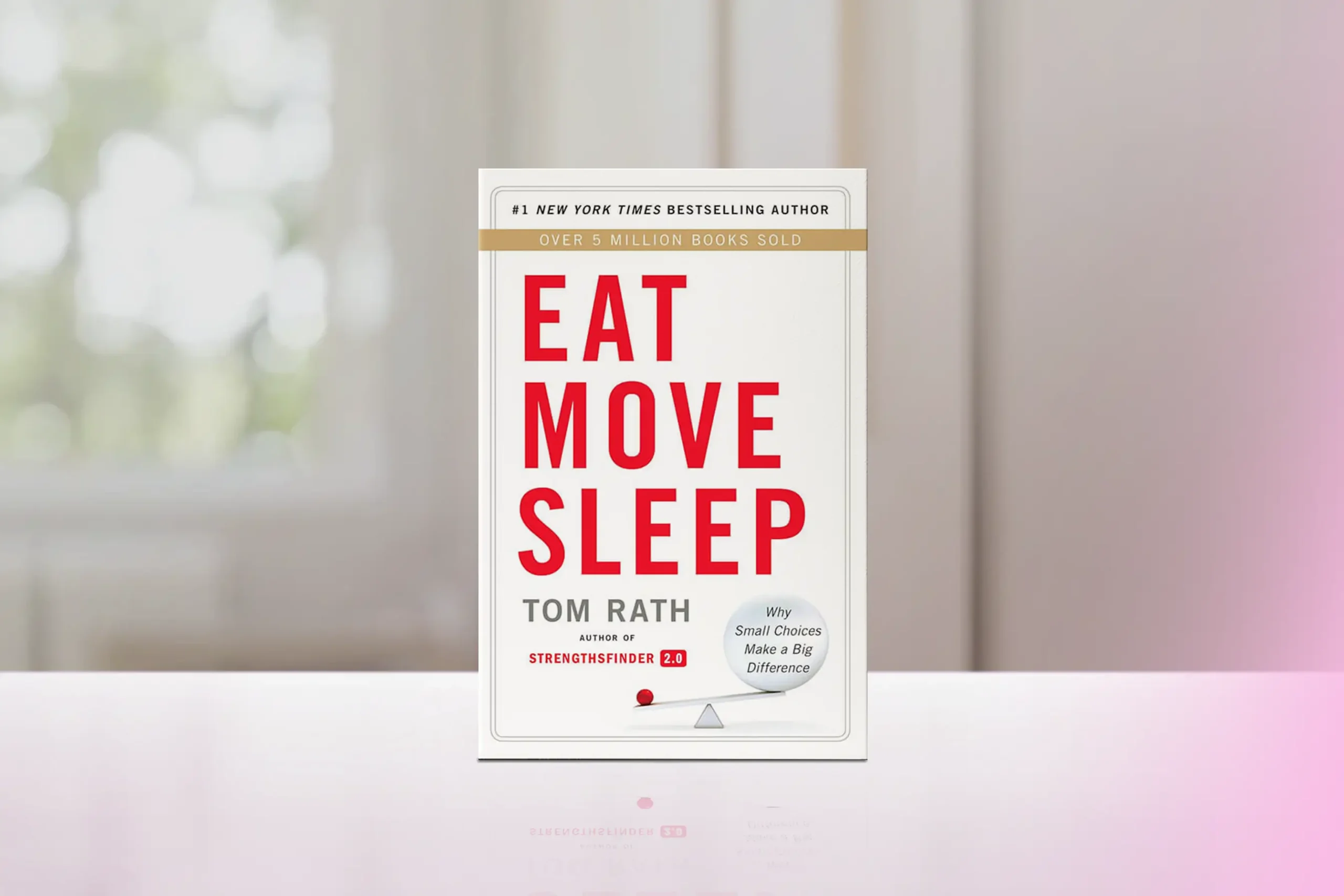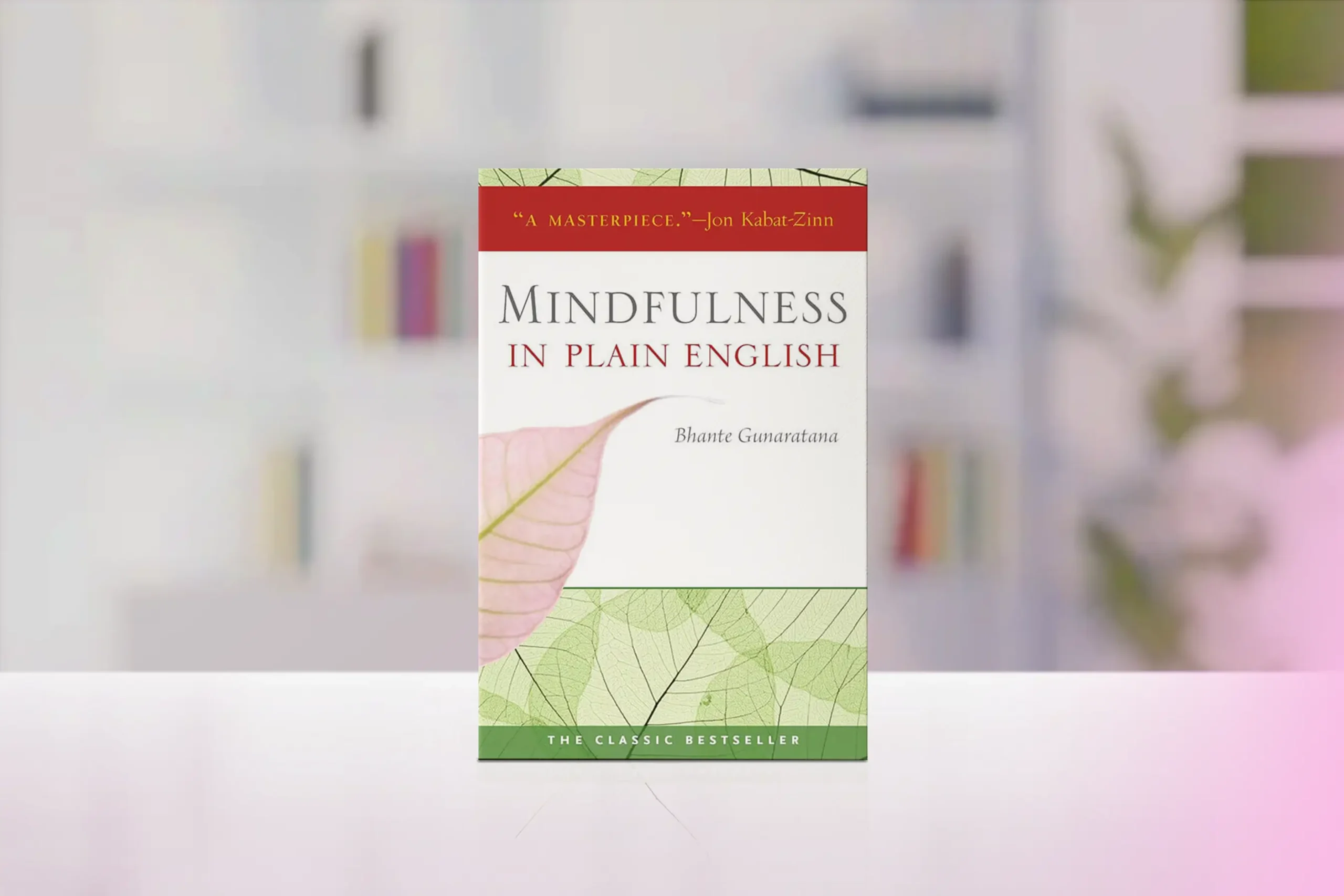Prioritizing your wellbeing is a powerful act of self-respect. It’s a conscious choice to honor your needs, protect your energy, and live with intention every day. This guide will help you with creating your first wellbeing plan—from vision to action—that truly supports your whole self.
Inside this article:
1. What is Holistic Wellbeing
Holistic wellbeing is an approach to health that considers the whole person—body, mind, spirit, and emotions—in the quest for optimal health and wellness. It’s based on the understanding that all these aspects of a person are interconnected, and that imbalance in one area can affect the others.
Holistic wellbeing embraces the understanding that you’re not compartmentalized into separate systems, but an interconnected whole. It acknowledges and respects the complex relationship between your:
- Physical body – How you move, rest, and nourish yourself
- Thoughts and focus – Your mental clarity and cognitive health
- Emotions – Your feelings and how you process them
- Purpose – Your sense of meaning and connection
Imagine your wellbeing as an ecosystem. When you’re chronically stressed (a mental challenge), your digestion might suffer (a physical response). When you move your body regularly (a physical practice), your mood often improves (an emotional benefit).
Respecting this interconnected nature of your wellbeing enables you to unlock remarkable benefits across all dimensions of your life.
Benefits of Holistic Wellbeing
Research consistently shows multiple benefits of an holistic approach to wellbeing:
- Improved overall health and longevity
- Enhanced mental clarity and focus
- Better stress management
- Increased energy and vitality
- More fulfilling relationships
- A greater sense of purpose and life satisfaction
The science is clear on the importance and benefits of health and wellbeing:
- Better Physical Health: Adults who engage in regular physical activity are 33% less likely to develop chronic disease. (Source: World Health Organization)
- Greater Emotional Resilience: Emotional regulation improves by up to 40% with regular self-care and reflection practices. (Source: National Institutes of Health (NIH))
- Improved Relationships & Social Health: Positive social connections are linked to a 50% increased likelihood of longevity. (Source: Harvard Health)
- Enhanced Life Satisfaction & Purpose: People with a strong sense of purpose are 23% less likely to die prematurely. (Source: JAMA Network)
- Youth Wellbeing Is Declining: People under 30, are experiencing a decline in happiness levels. Factors contributing to this include increased social media use, economic pressures, and feelings of social disconnection. (Source: World Happiness Report)
Want to explore further? Learn about the science behind mind-body connection in our article: The Mind-Body Connection: Holistic Approaches to Personal Development.
Key Takeaway: Holistic wellbeing recognizes that all aspects of your health—physical, mental, emotional, and spiritual—are interconnected and influence each other.
2. Why You Need a Wellbeing Plan
Creating a comprehensive wellbeing plan transforms vague intentions into concrete reality through a structured process.
Instead of reacting to health challenges after they emerge, a wellbeing plan empowers you to proactively design and maintain optimal health across all dimensions of your life.
The wellbeing planning process follows these essential steps:
- Vision – Establish a clear picture of your ideal state of wellbeing, defining what thriving means for you
- Planning – Break down your wellness goals into manageable steps, creating a roadmap for your needs
- Implementation – Translate intentions into daily practices with triggers and timeframes
- Monitoring – Regularly gathering objective data to assess what’s working and what isn’t
- Refinement – Make evidence-based adjustments to create a sustainable system that evolves with you
This systematic approach ensures your wellbeing efforts don’t become another abandoned self-improvement project, but instead form the foundation of a thriving life.
A personalized wellbeing plan empowers you to make clearer decisions, build resilience, create space for growth, live with greater presence, and align your daily habits with your deeper values and aspirations.
Need more structure? Try our practical guide: Building a Wellbeing Routine: Habits for Mental and Physical Health.
Key Takeaway: A wellbeing plan shifts you from reactive emergency self-care to proactive nurturing, creating sustainable rhythms that prevent burnout and align your daily life with your deeper values.
3. Your Purpose and Values
Before creating specific wellbeing practices, connect with what wellbeing genuinely means to you. This foundation transforms generic self-care into a deeply personal roadmap for fulfillment.
What does thriving feel like for you? What values do you want your self-care to embody? These questions reveal your unique wellbeing compass—whether you prioritize vitality, calm, connection, or other qualities.
Try these focused journal prompts:
- When do I feel most alive and connected to myself?
- What activities consistently restore and replenish me?
- What does “taking good care of myself” truly mean to me?
As patterns emerge, they highlight what matters most in your wellbeing. You might discover that creative expression feeds your soul more than conventional self-care, or that nature connection is essential to your sense of balance.
These insights become your decision-making filter, helping you select practices that genuinely nourish you rather than following generic advice that doesn’t serve your unique needs.
Want deeper insights? Read our article: The Connection Between Purpose and Personal Values.
Key Takeaway: Your personal values and definition of wellbeing create the foundation for a plan that genuinely nourishes you, transforming generic self-care into a meaningful practice aligned with what matters most to you.
4. Visualize Your Ideal Wellbeing
Imagine waking up feeling completely alive, balanced, and at peace. What sensations fill your body? How does your mind feel? What quality of energy moves through you?
This visualization isn’t just a pleasant daydream—it’s a powerful tool that creates neural pathways making your ideal state more accessible in reality.
Try this: Imagine yourself six months from now, living in alignment with your wellbeing values:
- Notice how you start your morning—the pace, presence, and rituals
- Feel how your body moves through the day—the energy, comfort, and vitality
- Observe the quality of your thoughts—the clarity, compassion, and focus
- Experience how you connect with others—the authenticity and meaningful engagement
- Notice how you end your day—the completion, rest, and renewal
Pay attention to elements that feel particularly compelling or emotionally resonant. These points of connection are crucial clues to what matters most in your wellbeing journey.
The power of visualization comes from engaging your emotions, not just your intellect. This emotional connection becomes your motivation when inevitable challenges arise.
Looking for inspiration? Explore this inspirational article: Stories of People Who Found Their Purpose Later in Life.
Key Takeaway: Visualization creates both an emotional connection to your wellbeing vision and a detailed blueprint of what true alignment looks and feels like, giving you both inspiration and practical direction.
5. Assess Your Current Wellbeing
Now that you have a vision of your ideal state of wellbeing, it’s time to compassionately assess where you are today. This step isn’t about criticism or focusing on what’s lacking—it’s about gaining honest awareness of your starting point so you can bridge the gap effectively.
Use the Wellbeing Wheel assessment tool: Draw a circle on paper and divide it into 8 equal sections labeled with these key areas:
- Physical health
- Mental clarity
- Emotional balance
- Relationships/connection
- Purpose/meaning
- Rest/relaxation
- Play/joy
- Environment/space
For each section, rate your satisfaction from 1-10 and shade accordingly. Approach this with curiosity rather than judgment—low scores simply identify opportunities for growth. This assessment reveals blind spots and highlights the gaps between your current state and vision, helping you direct energy where it will create the greatest impact.
Ready to calm your mind? Learn practical techniques in our guide: Mindfulness and Meditation for a More Balanced Life.
Key Takeaway: A compassionate assessment of your current wellbeing reveals which areas need the most attention, allowing you to create a plan that addresses meaningful gaps rather than following generic self-care advice.
6. Create Your Wellbeing Plan
This is where vision transforms into concrete action—where your insights and aspirations take shape as a practical roadmap for daily living. Your wellbeing plan will serve as both compass and map, helping you navigate toward greater balance while providing specific paths to follow.
Step 1: Set Your Goals
Begin by identifying what you want to achieve in each focus area from your Wellbeing Wheel assessment. Effective wellbeing goals are:
- Specific enough to guide action – Rather than “improve sleep,” try “create a consistent bedtime routine that helps me fall asleep easily.”
- Meaningful to you personally – Connect each goal to your deeper values and vision—this emotional connection fuels motivation.
- Flexible enough to evolve – Wellbeing isn’t a destination but a journey, so frame goals as directions rather than rigid endpoints.
- Balanced between aspiration and reality – Challenge yourself while acknowledging your current life circumstances and capacity.
For each focus area, craft 1-2 goals that would meaningfully shift your experience if achieved. Remember that fewer, deeper goals often create more sustainable change than numerous surface-level aims.
Step 2: Identify Your Core Wellbeing Pillars
From your goals, identify 3-5 key areas that will form the foundation of your wellbeing practice. These pillars represent the essential elements that support your unique ecosystem of wellbeing.
Common wellbeing pillars include:
- Restorative rest – Quality sleep, relaxation practices, and mental downtime
- Nourishing movement – Physical activity that energizes rather than depletes
- Mindful nutrition – Eating patterns that support energy and health
- Meaningful connection – Relationships that provide belonging and support
- Present awareness – Mindfulness and practices that anchor you in the now
- Purposeful engagement – Activities that provide meaning and contribution
- Creative expression – Outlets for imagination and personal expression
- Nature connection – Time in natural settings that restore perspective
- Learning and growth – Continued expansion of knowledge and capabilities
- Boundary maintenance – Protecting your energy and honoring your limits
Your selected pillars become the framework for your wellbeing plan, ensuring you address the dimensions most essential to your personal definition of thriving.
Step 3: Create Action Steps That Fit Your Life
Now comes the practical magic—translating your pillars and goals into specific, doable actions that fit into your real life. Effective wellbeing actions are:
- Easy to remember – Complicated plans get dropped when life gets busy
- Small steps – Tiny, steady actions work better than big, rare ones
- Clear and specific – “5 mins of breathing” works better than “meditate more”
- Works for you – Fit it to your personality and preferences
- Part of your routine – Add it to things you already do
For each of your pillars, define 2-3 concrete actions that would support your wellbeing goals. Be ruthlessly realistic about what you can consistently implement given your current life circumstances. Remember that consistency matters more than intensity—a five-minute daily practice creates more transformation than an hour-long session you rarely complete.
Some people find it helpful to categorize wellbeing actions by frequency:
- Daily essentials – Small, non-negotiable practices that form the foundation of your wellbeing (e.g., eight hours of sleep, morning movement, outdoor time)
- Regular rhythms – Activities scheduled weekly or several times per week (e.g., meal planning on Sundays, phone-free evenings twice weekly, social connection time)
- Occasional resets – Deeper practices scheduled monthly or quarterly (e.g., digital detox weekend, personal retreat day, seasonal reflection)
I remember struggling with my first wellbeing plan because I included too many aspirational practices without considering how they’d fit into my actual schedule. What transformed my approach was starting with my existing daily structure and identifying natural integration points—like pairing a new breathing practice with my morning coffee ritual that was already firmly established.
Here are some Wellbeing Plans to inspire you:
Emma, 19, university student with anxiety:
A first-year student navigating anxiety, seeks balance through holistic wellbeing practices—mindfulness, movement, spiritual reflection—while using campus support and routines to stay grounded amid academic pressures.
Emma’s Wellbeing Plan:
- Physical: 15-minute morning yoga; walking between classes
- Mental: 5-minute guided meditation before bed; 25-minute focused study sessions
- Emotional: Journal about anxious thoughts; weekly call with supportive friend
- Spiritual: Sunday nature walks; volunteer monthly at campus food pantry
- Support: Join university mindfulness group; use meditation app with reminders
Michael, 38, busy father of two:
A devoted dad juggling parenting and work, Michael creatively weaves wellbeing into family life—dance breaks, gratitude on the go—and builds support through childcare swaps and practical routines.
Michael’s Wellbeing Plan:
- Physical: Family dance parties after dinner; meal prep on Sundays
- Mental: 10 minutes of reading before bed; remove email from phone
- Emotional: Weekly check-in with partner; gratitude practice while commuting
- Spiritual: Monthly volunteer day with kids; morning intention-setting
- Support: Trade childcare with neighbor for exercise time; use habit-tracking app
Sandra, 54, mid-career professional seeking balance:
With a full schedule and evolving priorities, Sandra integrates wellbeing through movement, connection, and reflection—nurturing a sense of purpose while leaning on community, curiosity, and mindful routines.
Sandra’s Wellbeing Plan:
- Physical: Morning yoga or stretching; weekend walks with friends
- Mental: Listen to educational podcasts; unplug from screens after 8pm
- Emotional: Biweekly lunch with close colleagues or friends; evening daily reflection
- Spiritual: Daily meditation; reconnect with personal values through reading
- Support: Attend community workshops; regular check-ins with a mentor or trusted friend
Step 4: Design Your Wellbeing Environment
Create surroundings that support your desired behaviors by optimizing your physical spaces (visible meditation cushion), digital environment (wellbeing apps on home screen), social context (accountability partners), and cue management (visual reminders).
Remember that consistency matters more than intensity—a five-minute daily practice creates more transformation than an hour-long session you rarely complete.
Step 5: Plan for Obstacles
For each practice, identify potential barriers and create if-then contingency plans: “If I don’t have time for my full routine, then I’ll still do three minutes of deep breathing.” This flexible approach transforms obstacles from derailments into simple triggers for your backup plans.
Need help setting meaningful goals? Learn effective techniques in our guide: The Art of Effective Goal Setting for Personal Growth.
Key Takeaway: A effective wellbeing plan translates aspirations into specific, sustainable actions tailored to your life, built around 3-5 core pillars that address your unique definition of thriving while anticipating and planning for inevitable obstacles.
7. Track Your Wellbeing Progress
Tracking provides valuable feedback that reveals patterns, highlights progress, and guides adjustments. Choose a simple yet meaningful system:
- Habit trackers – Mark completed wellbeing practices on calendars or journals
- Wellbeing journals – Record reflections on energy, mood, and overall state
- Digital apps – Monitor specific aspects of wellbeing
- Regular check-ins – Schedule plan reviews weekly or monthly
Look for patterns during review sessions. Which practices consistently improve your energy or mood, and which areas need attention when neglected? Avoid any personal judgment, use any missed practices as information about what needs adjustment rather than as a sign of your failure.
Need a structured approach? Try our practical guide: How to Create a Wellbeing Journal to Track Your Progress.
Key Takeaway: Consistent tracking creates awareness of patterns and progress, providing the feedback needed to refine your approach and celebrate meaningful changes.
8. Celebrate Wellbeing Wins
In our achievement-oriented culture, we rush between goals without acknowledging progress, yet celebration is essential for sustainable change—reinforcing neural pathways, generating positive emotions, creating motivation, and developing balanced perspective.
Effective celebration doesn’t require grand gestures. Consider these approaches:
- Daily micro-celebrations – Brief acknowledgments for following through on intentions
- Weekly reflections – Regular time to note progress and positive changes
- Milestone markers – Special activities for reaching significant points in your journey
- Progress sharing – Telling supportive people about meaningful shifts you’ve experienced
One of the most powerful forms of celebration is simply pausing to notice and fully feel the benefits your wellbeing practices are creating. Can you sense the increased calm after consistent meditation? The improved energy from prioritizing sleep? The deeper connections from being more present?
Many of us find it easier to notice what’s not working than what is. Intentional celebration helps correct this negativity bias, bringing awareness to genuine progress that might otherwise go unrecognized.
Want to feel more positive? Discover more about what make us happy in our article: The Science of Happiness: What Really Makes Us Content.
Key Takeaway: Celebrating progress, even in small ways, reinforces positive behaviors and creates the emotional fuel needed for sustainable wellbeing practices.
9. Evolve Your Wellbeing Plan
Effective wellbeing plans evolve with changing life circumstances, emerging insights, and shifting needs. Reassess quarterly or during transitions with these questions:
- Which practices have most improved your wellbeing?
- What feels energizing versus obligatory?
- What new wellbeing needs have emerged?
- Which practices have you outgrown?
- How should your plan adapt to life changes?
Evolution may mean deepening valuable practices or releasing those that no longer serve you. The most sustainable wellbeing journeys naturally cycle through expansion and contraction, like a garden changing with seasons.
Ready for growth? Check out how setback can help us grown in: The Role of Failure in Personal Growth: Learning from Setbacks.
Key Takeaway: A wellbeing plan should evolve as you do, with regular reassessment ensuring it remains aligned with your current needs, circumstances, and deepest values.
10. Start Your Self-Care Journey
Transform intention into action today with one powerful practice:
- A 2-minute morning meditation that centers your day
- Scheduling non-negotiable rest periods in your calendar
- Creating a digital sunset ritual that improves sleep quality
- Establishing a weekly nature immersion that restores perspective
- Tracking your energy patterns to identify wellbeing opportunities
The key isn’t perfection but persistence, keep returning back to your intentions even after inevitable setbacks.
Start today
Begin with one impactful practice that resonates deeply, knowing that consistent small actions build the foundation for profound wellbeing transformation.
Your wellbeing plan is a living reflection of your deepest values that will evolve as you do. What might become possible when wellbeing shifts from occasional afterthought to central organizing principle? Your next choice begins the answer.
Related articles
Balancing Mind, Body, and Spirit: The Foundation of Wellness
Achieve balance and improve your overall quality of life with this comprehensive approach.
Effective Stress Management: Your Path to a Healthier, Balanced Life
Discover effective ways to reduce stress and enjoy a more relaxed, productive life.
How to Prioritize Emotional Wellbeing: A Beginner’s Guide
Boost your emotional intelligence and build stronger, more satisfying relationships.
The Importance of Self-Care: Simple Strategies to Make Time for Yourself
Learn simple yet powerful self-care techniques to feel better every day.
Further reading
“The Power of Habit” by Charles Duhigg
Examines habit formation and change, supporting the article’s focus on creating sustainable wellbeing practices.
“Atomic Habits” by James Clear
Offers strategies for building good habits and breaking bad ones, aligning with the article’s emphasis on developing a personalized wellbeing plan.
“The Miracle Morning” by Hal Elrod
Proposes a morning routine for personal development, complementing the article’s discussion on creating daily wellbeing practices.
“The 7 Habits of Highly Effective People” by Stephen R. Covey
Presents a holistic approach to personal and interpersonal effectiveness, supporting the article’s comprehensive view of wellbeing.
“Mindset: The New Psychology of Success” by Carol S. Dweck
Explores the impact of mindset on success and wellbeing, aligning with the article’s emphasis on creating a focused, effective wellbeing plan.





